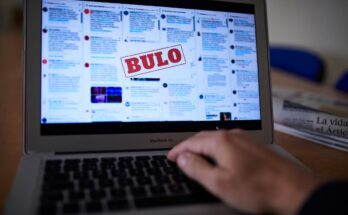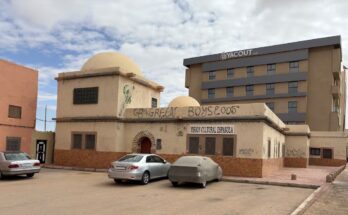On November 6, 1975, an infernal sirocco blew in the Sahara. On one side of the wire fences that protected the northern border of the last Spanish colony were concentrated 350,000 Moroccans. Most were solemnly poor and had been recruited from all the provinces of the kingdom that Hassan II, father of the current monarch, Mohamed VI, ruled with an iron fist. Franco’s army was lined up on the other side of the barbed wire fence.
This Thursday marked exactly half a century of that scene which illustrated the front pages of newspapers and television news around the world. Hasan II had invited his subjects to invade Western Sahara with what he called the Green March: green is the color of Islam. To do this, he manipulated the ruling of the International Court in The Hague, to which he had agreed to submit to decide whether the territory was part of Morocco or whether its inhabitants should choose their future through a self-determination referendum.
Three weeks earlier, The Hague had ruled: “The Court’s conclusion is that the materials and information presented do not establish any link of territorial sovereignty between the territory of Western Sahara and the kingdom of Morocco or the Mauritanian complex. Therefore, the Court has found no legal links of such nature (…) which could modify the decolonization of Western Sahara and in particular the principle of self-determination through the free and genuine expression of the will of the peoples of the territory.”
It was a clear defeat for Morocco’s annexationist claims. Starting from that ruling, Spain could fulfill its obligations and the United Nations would promote the Saharawi self-determination referendum.
However, a few hours after the sentence was published, Hassan II addressed Moroccans via radio and television. The monarch silenced the paragraphs that denied his country’s sovereignty over the territory, stated that Islamic international law does not distinguish between “legal constraints and vassalage” – which the text speaks of incidentally – and territorial sovereignty, and assured that the court had established Morocco’s legitimacy: “We have nothing left but to recover our Sahara, whose doors have been opened to us,” he proclaimed. Thus the Green March was born.
Spain abandoned the territory – and its obligations as an administrative power – and left the Saharawis at the feet of Moroccan armored vehicles, under a rain of napalm and white phosphorus.
The war between Morocco and the Polisario Front lasted until 1991. That year both sides reached a UN-approved ceasefire agreement. It included the deployment of the United Nations Referendum Mission in Western Sahara (Minurso), whose mission was to oversee the end of hostilities and organize the territory’s self-determination referendum. However, Morocco’s ongoing obstacles have so far prevented the consultation.
A low-intensity war strikes the Sahara again 50 years after the Green March. If in 1975 it was the appeal to the Hague Court that tried to avoid the conflict, now it is Donald Trump’s administration that has done everything possible to guarantee Morocco the sovereignty over the territory it already de facto holds. This would be the price of Mohamed VI’s support for the Abraham Accords. The adoption of Rabat’s autonomy proposal as the basis for negotiations represents a setback for the Polisario Front, but Trump’s efforts at the UN have not achieved their main objective: the recognition of Morocco’s sovereignty over the territory, contrary to what Mohamed VI implied.
The United States had to substantially modify its initial draft to avoid vetoes from Russia and China in the Security Council. Firstly, the approved text expressly provides for “the principle of self-determination” of the Sahrawis; That is, nothing can be decided without your support. Second, it does not define Morocco’s proposed autonomy as the sole basis for resolving the conflict, but rather notes that it “could constitute the most feasible solution” and “welcomes any constructive suggestions in response” to it. Thirdly, Minurso’s mandate is extended for another year.
It seems difficult for an authoritarian regime like that of Morocco to present the “true autonomy” claimed in the document to convince the Saharawis, who would have to endorse it in a referendum. This is why Mohamed VI’s speech broadcast on television a few hours after learning of the approval of the UN resolution resembles that of his father, Hasan II, after the ruling of the Court in The Hague. “From now on there will be a before and after October 31, 2025,” solemnly declared the current monarch, flanked by Crown Prince Moulay Hasan and his brother Moulay Rachid. And he added: “The approved text establishes (Morocco’s) sovereignty over the southern provinces (Western Sahara).”
On this last point the King of Morocco confuses his wishes with reality. The representative of Denmark, who supported the resolution, made it clear: “Our vote in favor does not constitute a recognition of Morocco’s sovereignty over Western Sahara, as any solution must be agreed between the parties.” Just as Hassan II manipulated the ruling of the Hague Tribunal, Mohamed VI gives the impression of wanting to distort the UN resolution to his advantage.
The Polisario Front expressed its opinion on the agreement the following day by bombing the province of Smara. It was as if he wanted to make it clear that someone is trying to sell the gazelle’s horns before hunting it.
Half a century after the Green March, the sirocco continues to blow in the Sahara.



